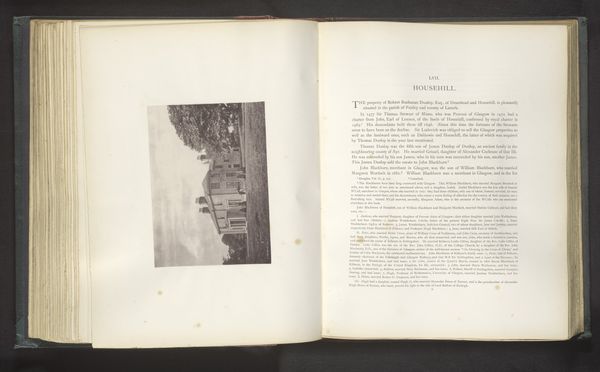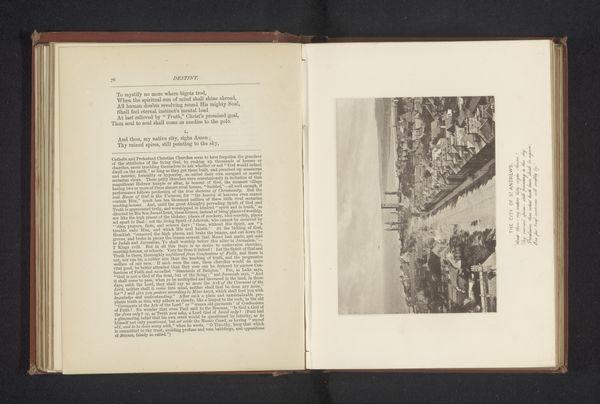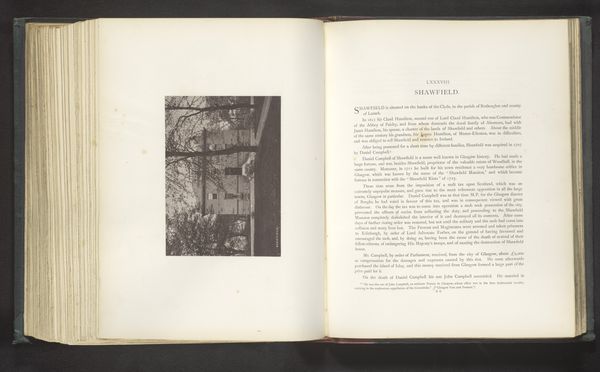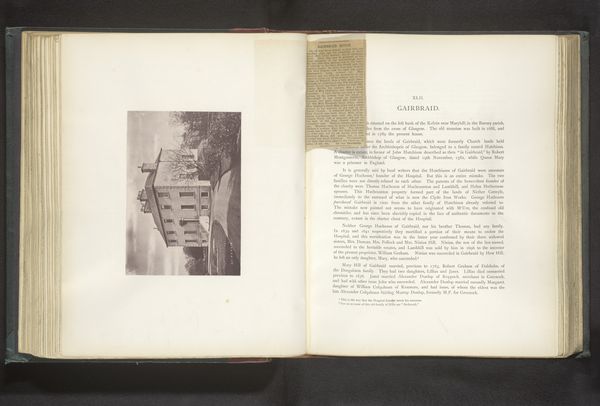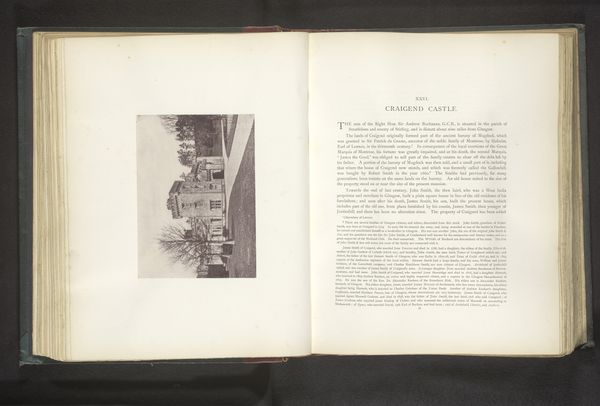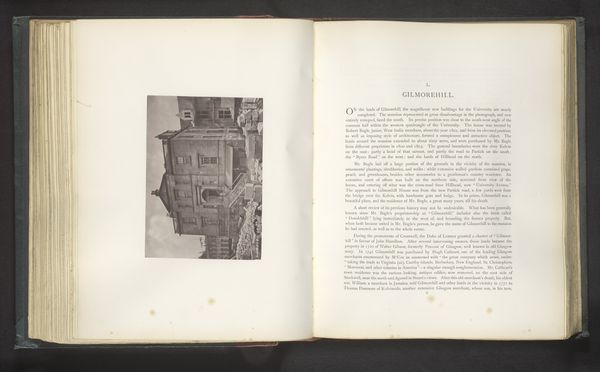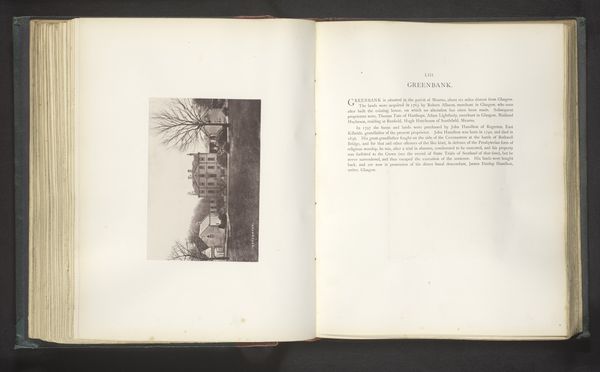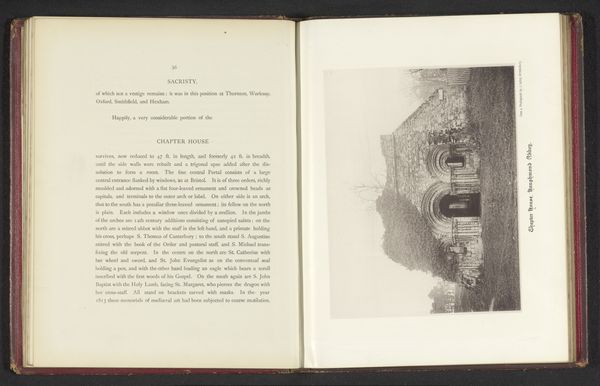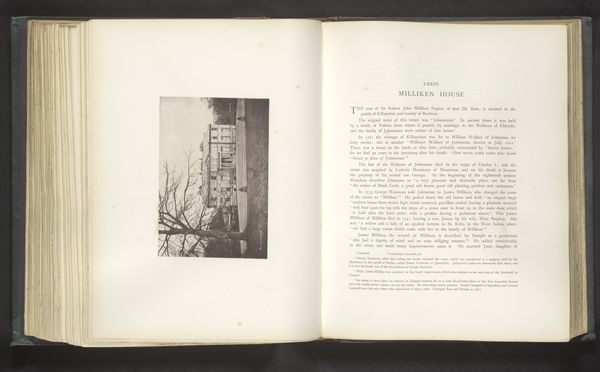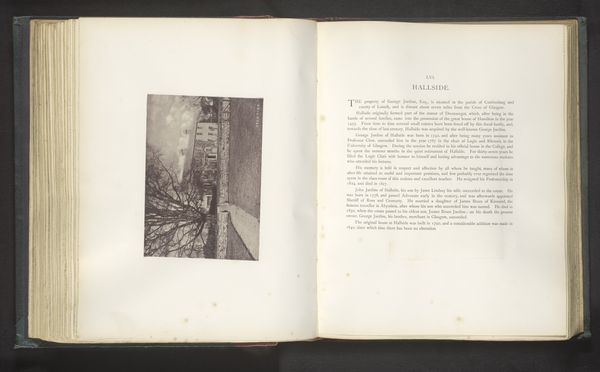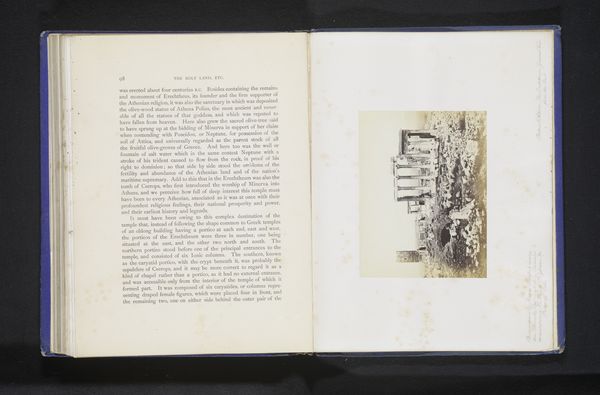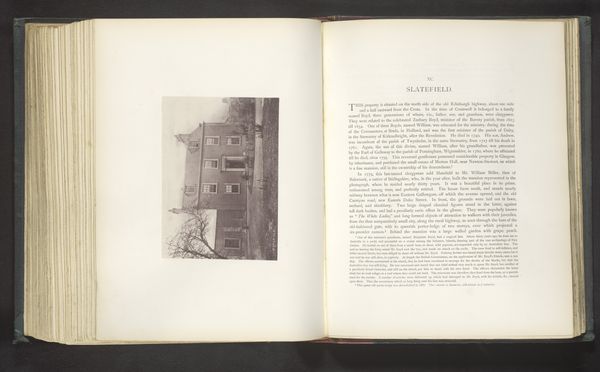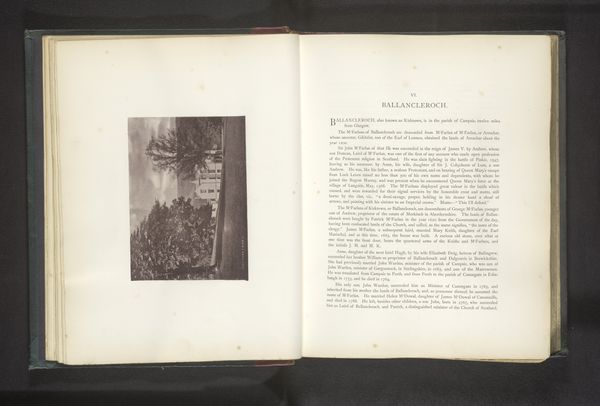
print, photography
# print
#
landscape
#
photography
#
building
Dimensions: height 115 mm, width 160 mm
Copyright: Rijks Museum: Open Domain
Curator: Looking at this open book, I’m drawn in by the solemn, almost spectral, presence of what I now know to be a photograph of Castlemilk, taken by Thomas Annan before 1878. Its monotone hues feel distant, melancholic. Editor: It's a poignant visual record. These images often presented a romantic vision of Scotland's architectural heritage, which sometimes obscured the social and economic realities. I think Annan does an excellent job presenting this in the photo; not necessarily shying away from reality but presenting an interpretation that evokes emotion. Curator: What strikes me is the juxtaposition of its proud architecture with what appears to be encroaching nature around it, giving the impression of the building blending organically into the environment. Almost disappearing. What is that suggesting to you? Editor: I see something else entirely. This "naturalization," as it were, could also be a powerful comment on how powerful social structures embed themselves deeply into the landscapes they control. So deeply, one day they almost appear as natural aspects themselves. Curator: I find that to be insightful. Even as the image evokes this gentle nostalgia for a bygone era, there’s an undeniable weight there, a solemn nod to the inevitable, relentless impact of power across time. There’s no warmth or glamour present, but more so the subtle greyscale tones offering complexity in every shadow. Editor: Precisely. The romanticisation of Scotland in that era, which these kinds of images aided, sometimes failed to acknowledge class disparity, land ownership, and its inherent social politics. They presented such an illusion of harmony between the architectural structure and nature to obscure or ignore complex social narratives in play at that time. Curator: Viewing Annan’s work through such a critical lens opens the photograph to fresh perspectives. What starts off as a nostalgic photo ends up offering much deeper perspectives, helping us contemplate how the buildings shape narratives, reflecting more than a static memory but instead evolving dialogue through decades. Editor: Yes. Looking again, it becomes even clearer that the photograph isn't just documentation. It's actively constructing, framing not only stone and landscape but narratives that are crucial to interrogate rather than accept wholesale. Curator: This certainly pushes us past sentimentality into a valuable area of inquiry, wouldn't you agree? I think the magic happens in that transition. Editor: Absolutely, this interplay, where nostalgia meets interrogation, is where art's true power resides. It certainly is.
Comments
No comments
Be the first to comment and join the conversation on the ultimate creative platform.
